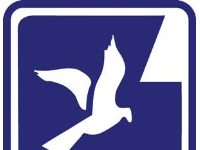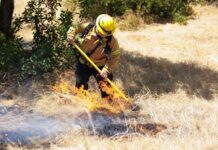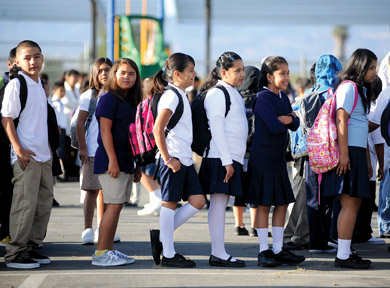Photography was a rare job for a lady
In a day and age when young women were expected to get married,
raise a family and keep house, Inez Fitzgerald must have stood out
from the crowd.
Ever since her high school years, it had been her life’s desire
to be a photographer.
Photography was a rare job for a lady
In a day and age when young women were expected to get married, raise a family and keep house, Inez Fitzgerald must have stood out from the crowd.
Ever since her high school years, it had been her life’s desire to be a photographer. Despite all the obstacles inherent in a woman trying to make her way in a profession and manage her own business, Inez Geraldine Fitzgerald, in the waning years of the Victorian era, did just that.
Inez was born to Stewart and Jerusha Palmer Fitzgerald on Aug. 20, 1852, in Manchester, Washtenaw County, Michigan. Along with her older sister, Emma and younger brother, Vincent, Inez lived in Manchester through her late twenties. The family apparently led a successful, middle-class life, with all the children attending school full time. When Inez was still young, her father worked as a farmer, but by the time she reached school age he had become a railroad agent, a job he kept for the next 20 years before becoming a traveling salesman in later life.
By the 1880s, although still living at home in Michigan, Inez was working, albeit as a telegraph operator, while her older sister Emma was employed at a millinery shop and Vincent was off on his own. But Inez had made up her mind what she wanted to do, and that was to learn the art of photography. When she sought out the local photographer for training, she met with a discouraging response. After all, everyone knew that taking pictures was a man’s job.
It was an era when photography was still in its infancy. Besides the heavy glass sheets used to capture photographic images, the cameras were large, wooden box-like affairs that sat on cumbersome stands. Managing the equipment in a studio setup was effort enough: going out into the wild to capture nature prints was downright burdensome.
There was the equipment’s weight, lengthy horse and buggy travel and then, once there, the set-up time. Even working in a studio required patience: While the subject sat still, the photographer had to stand behind the huge camera apparatus with a black cloth over his head in order to focus on the image.
According the Gilroy Museum records, it was after her mother’s death in 1888 that Inez and her father came to California. Once in San Francisco, she again attempted to enter a photography business, but was rebuffed. Still determined to seek a place where she could set up business on her own, like other pioneering entrepreneurs, Inez found her chance. She traveled south and arrived in Gilroy.
Since its founding, Gilroy had had several photographic studios. In the town’s earliest years, Mr. Johnson had a photo studio at Sixth and Monterey streets. Then there was A.R. Moore’s studio, a popular gathering spot on Monterey Street between Fifth and Sixth streets.
Moore’s was popular for more than portrait sittings. During that period, Gilroy had no public library. Mr. Moore had generously provided a space in the back of his store for the Good Templars fraternal organization and the Blue Ribbon Temperance Society to maintain their combined lending libraries.
Inez’s first burst of good fortune came after Moore decided to move back East. At last, she was able to step into his place and open up her own photography business. Not only that, she had inherited Moore’s ready-made customer base.
A friendship with then-Mayor and Gilroy physician, Dr. H.R. Chesbro offered Inez a step up to a new studio. In late 1899, she opened her office and working space upstairs in the newly constructed, two-story brick First Chesbro building, located at 7459-63 Monterey St. (The building was torn down in 2005, and a new one is currently being reconstructed at the site.)
Dr. Chesbro maintained his own medical offices on the ground floor in the building. A 1907 article in the Gilroy Gazette noted, “The Fitzgerald Gallery, conducted by Miss Inez Fitzgerald for the past 18 years, has been a place in which Gilroyans could point with pleasure as fulfilling the conditions making for beauty. Miss Fitzgerald is skillful in either indoor or outdoor work.”
In those days, going for a photographic sitting was meant, as it is today, to preserve and capture a special occasion in one’s life, whether that was a newborn baby, a wedding, or a family portrait. Inez’s work quickly attracted an admiring audience. In that time out-of-state newcomers arriving in town wanted to send fresh images back home for the folks they had left behind. The mounted photos, sent along with a newsy letter, made for lasting keepsakes especially in an age before the telephone had come into being.
Besides studio work, Inez also liked to photograph Gilroy’s natural scenery, which included the rare occasions when snow fell on the hillsides. On one occasion, it was said, she climbed out of a window to get to the roof of the Chesbro Building in order to command the best camera view of the snow-covered range. She also taught photography to aspiring local students.
Inez lived away from Gilroy for a period, at one point opening a studio in Redding in Shasta County. She also lived in San Jose, but returned to live in Gilroy again before moving to a retirement home in San Francisco. In 1934, she settled in Los Angeles where she resided in an Eastern Star Home until her death at age 94 on Jan. 20, 1947. The Gilroy Evening Dispatch in her obituary noted she “… was one of the few business women in this city in the early history of the town, having been a photographer of notable ability.”
Today, many older Gilroy families still treasure photographs of ancestors whose image was captured b y Inez’s camera over a century ago. Copies of her local photos are also on file at the Gilroy Museum.








